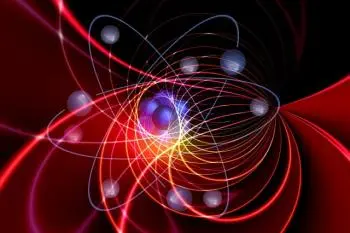
Modern physics is a branch of physics that developed from the 20th century, introducing new concepts and theories that revolutionized our understanding of the universe at microscopic and macroscopic levels.
Unlike classical physics, which is based on Newton's laws, modern physics focuses on phenomena involving subatomic particles, high energies, and the quantum nature of the world.
Branches of modern physics
The different branches of physics that modern physics encompasses are:
Theory of relativity
The theory of relativity, developed by Albert Einstein, consists of two formulations:
-
The theory of special relativity: This theory describes how physical phenomena behave in inertial systems in uniform relative motion with respect to each other. The basis of the theory of special relativity is based on two fundamental postulates: the principle of relativity and the invariance of the speed of light.
-
The theory of general relativity: it is an extension of the theory of special relativity that includes gravity. This theory proposes that gravity is not a classical force, but a manifestation of the curvature of space-time caused by the presence of mass and energy.
These theories describe the behavior of moving objects and gravity in terms of curved space and time.
Quantum mechanics
Quantum mechanics is the theory that describes the behavior of subatomic particles, such as electrons and photons.
Unlike classical physics, quantum mechanics introduces the concept of wave-particle duality, where particles can exhibit properties of both point particles and waves.
Particle physics
Particle physics is concerned with the study of subatomic particles and the fundamental forces acting between them. Particle physics studies particle accelerators and detectors to investigate elementary particles and fundamental interactions.
Cosmology
Cosmology is the branch of modern physics that deals with the study of the origin, evolution, and structure of the universe as a whole. This discipline seeks to understand the nature of the universe, its composition, its expansion and how it has evolved over time.
This branch of physics combines concepts and principles from theoretical physics, observational astronomy, and astrophysics to investigate fundamental questions about the universe.
Condensed matter physics
Condensed matter physics focuses on the properties of matter in condensed states, such as solids and liquids, and how these properties emerge from the interaction of atoms and molecules.
This branch of modern physics has led to advances in electronics, superconductivity, and advanced materials.
Who is the father of modern physics?
The title of "father of modern physics" is commonly attributed to Sir Isaac Newton. Newton was a prominent English scientist, mathematician, and physicist who lived in the 17th and 18th centuries. His contributions revolutionized the understanding of physics and laid the foundation for classical physics.
 Newton formulated the three laws of motion, known as Newton's laws, which describe the behavior of moving objects. Furthermore, he developed the law of universal gravitation, which explains the mutual attraction between objects with mass. These fundamental laws and concepts are foundational in classical physics and laid the foundation for later studies in physics.
Newton formulated the three laws of motion, known as Newton's laws, which describe the behavior of moving objects. Furthermore, he developed the law of universal gravitation, which explains the mutual attraction between objects with mass. These fundamental laws and concepts are foundational in classical physics and laid the foundation for later studies in physics.
Newton also worked on optics, performing experiments on prisms and showing that white light breaks up into different colors when it passes through a prism. His work in optics laid the foundation for understanding the nature of light and image formation.
Modern physics timeline
Timeline highlighting some important milestones in modern physics:
1900: Max Planck introduces quantum theory by proposing that energy is quantized and comes in discrete packets called "quanta."
1905: Albert Einstein publishes the theory of special relativity, which revolutionizes our understanding of space, time, and energy.
1911: Ernest Rutherford establishes the nuclear model of the atom by discovering that most of the mass and positive charge is concentrated in a small, dense nucleus.
1924-1927: Louis de Broglie, Erwin Schrödinger, Werner Heisenberg, and others develop quantum mechanics, a theory that describes the behavior of subatomic particles.
1927: George Gamow proposes the Big Bang theory, which postulates that the universe originated from a primordial explosion.
1932: James Chadwick discovers the neutron, a neutral particle in the atomic nucleus.
1938: Otto Hahn and Fritz Strassmann discover nuclear fission, a process in which a heavy atomic nucleus splits into two smaller nuclei.
1945: First detonation of an atomic bomb in the Manhattan Project, marking the beginning of the nuclear age.
1954: First production of electrical energy from nuclear energy at a nuclear power plant in Obninsk, Russia.
1964: Murray Gell-Mann and George Zweig propose the existence of quarks, subatomic particles that make up protons and neutrons.
1990: The Large Hadron Collider (LHC) at CERN, the world's most powerful particle accelerator, is commissioned to investigate fundamental particles and forces.
2012: The discovery of the Higgs boson at the LHC confirms the existence of the Higgs field, which gives particles mass.